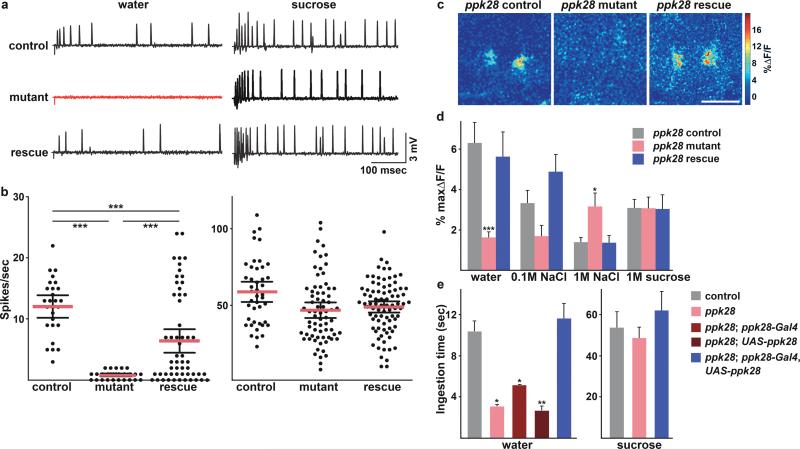Figure 2.
The ppk28 gene is necessary for cellular and behavioral water responses. a. Extracellular bristle recordings of ppk28 control, mutant and rescue flies after water (left) or 100 mM sucrose (right) stimulation, showing action potentials. Stimulation begins at recording. b. Scatter plot of water and sugar responses (mean ± s.e.m in bars; data points as dots). Water responses are ***P=0.001 by Dunn's multiple comparison. c. G-CaMP fluorescence increase in ppk28 control, mutant and rescue projections to water (%maxΔF/F) (SOG, scale bar 50μm). d. Fluorescence change summary following water, 0.1M NaCl, 1M NaCl, 1M sucrose (n=8-11 trials/concentration ± s.e.m; t-test, ppk28 control versus mutant, water: ***P=0.0008, 1M NaCl: *P=0.03). e. Behavioral assays measuring water or 500mM sucrose consumption time. Control flies drink more water than ppk28 mutants (*P=0.017), ppk28 mutants + ppk28-Gal4 (*P=0.037) or ppk28 mutants + UAS-ppk28 (**P=0.008). Water consumption of control and rescue is not different (P=0.53). Sucrose consumption is not different (vs control, mutant: P=0.63; rescue: P=0.53). n= 3 ± s.e.m trials, 18-25 flies/trial/genotype, t-test.

